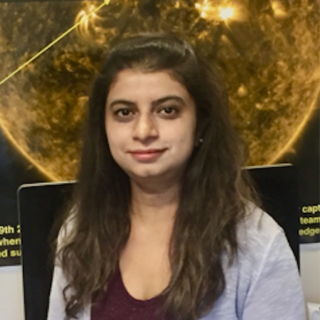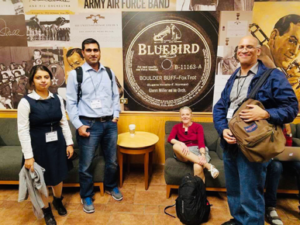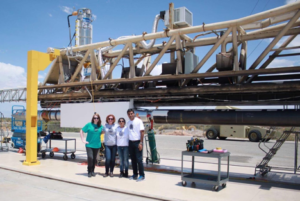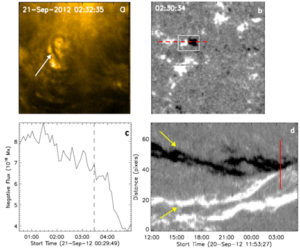Navdeep Kaur Panesar (she/her)
Research Scientist and Atmospheric Imaging Assembly team member at Lockheed Martin Solar and Astrophysics Laboratory

I am a heliophysicist and study the Sun, our nearest star.
Current research
Questions
How does the evolution of the Sun’s magnetic field lead to the formation and triggering of different types of solar eruptions such as jets, network jets, campfires, filaments/prominences, and coronal mass ejections?
Approach
By using data from different instruments (SDO/AIA, SDO/HMI, Solar Orbiter, IRIS, Hi-C, STEREO, Hinode and GONG), I examine the origins and trigger mechanisms of various types of solar events.
Innovations & Discoveries
I investigated the buildup and triggering mechanism of jet-driving minifilaments and found that flux cancelation (as a result of the submergence of the lower reconnected loops) is the main candidate for both the formation of the pre-jet minifilament and for its jet-driving eruption in the quiet Sun and coronal holes (Panesar et al 2016, 2017, 2018a). I have also concluded that even small-scale jets, known as jetlets, are triggered by flux cancellation and are analogous to typical coronal jets (Panesar et al 2018b, 2019).
Recently, I examined the magnetic origin of solar campfires, small-scale coronal brightenings. Their study suggests that the presence of magnetic flux ropes may be ubiquitous in the solar atmosphere and not limited to coronal jets and CMEs, and magnetic flux cancellation is the fundamental process for the formation and triggering of most campfires (Panesar et al 2021).
Technical Description
My research is focused on utilizing a variety of solar data to understand the formation mechanism of different types of jets/jetlets and minifilaments, and the physical mechanisms that lead to their eruptions.
I use SDO/HMI magnetograms to investigate the magnetic field evolution at the base of solar features observed by EUV/UV instruments such as SDO/AIA, IRIS, Hi-C, and SolO/EUI. These features include coronal jets/jetlets/network jets, solar (mini)filaments/prominences, campfires, and solar eruptions such as coronal mass ejections.
Publications
External Links

At SPD meeting with colleagues. From left to right: Navdeep Panesar, Sanjiv Tiwari, Mitzi Adams, and Alphonse Sterling.

At White Sands, New Mexico, during a Hi-C launch. From left to right: Caroline Alexander, Amy Winebarger, Navdeep Panesar, and Sanjiv Tiwari.

This image is adapted from Panesar et al 2016, ApJL 832,7. Panel (a) shows an AIA 171 Å image of a quiet region pre-jet minifilament (shown by a white arrow). Panel (b) shows an HMI line of sight magnetogram of the pre-jet minifilament base region. Panel (c) shows negative flux as a function of time computed inside the box of panel (b). Panel (d) shows HMI time-distance image along the red dashed line in panel (b). The vertical lines in (c) and (d) show the jet eruption time. The yellow arrows in (d) point to the positive and negative flux clumps that converged and canceled, and led to the jet eruption.
Education
PhD in Physics from Göttingen University, Germany
Masters (MSc) in Astronomy and Space Physics, Punjabi University, India
Bachelor (BSc) in Science, Panjab University, India
Masters (MSc) in Astronomy and Space Physics, Punjabi University, India
Bachelor (BSc) in Science, Panjab University, India
Get in touch: panesar (at) baeri.org // panesar (at) lmsal.com
About Navdeep
Where are you from, and what were you doing before BAERI?
I grew up in Ludhiana, India, and currently live in the Bay Area, California. Before coming to BAERI I was a NASA Post-doctoral program (NPP) fellow at the NASA Marshall Space Flight Center in Huntsville, AL.
What’s one job-related thing that you love talking about with other people?
I enjoy talking about solar coronal jets and how fascinating the Sun and solar data are.
How about a non-job related thing?
Gardening, dancing, and traveling.
We are a community of researchers, engineers,
explorers, writers, and more. Our shared belief
in the power of science inspires our work to
better understand our planet, and the universe.
explorers, writers, and more. Our shared belief
in the power of science inspires our work to
better understand our planet, and the universe.
